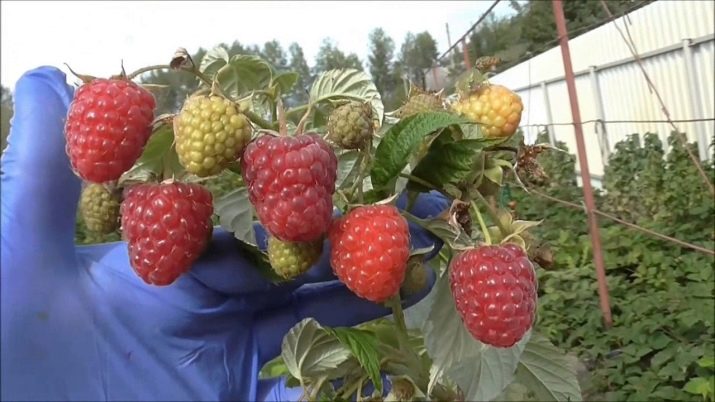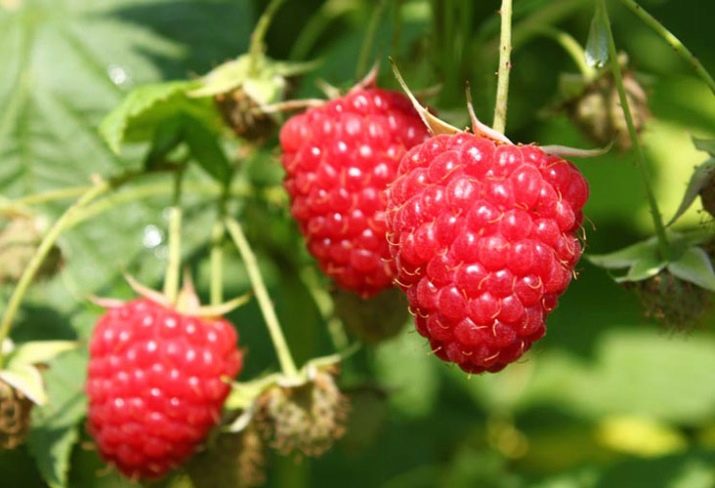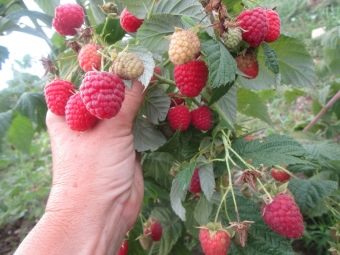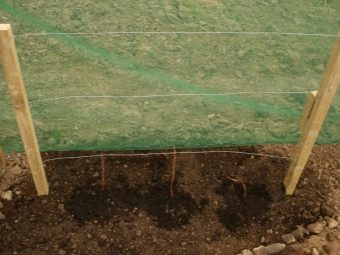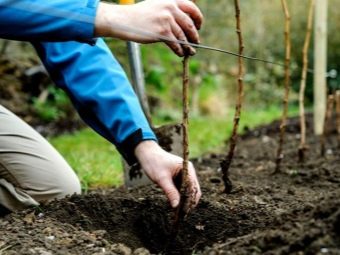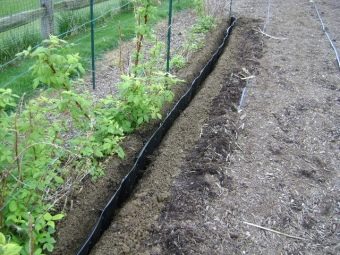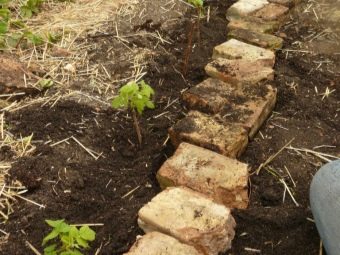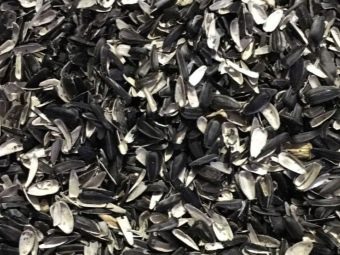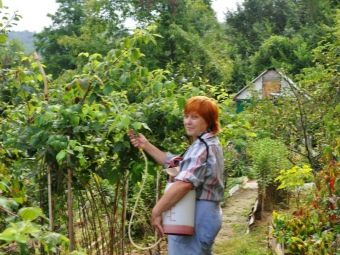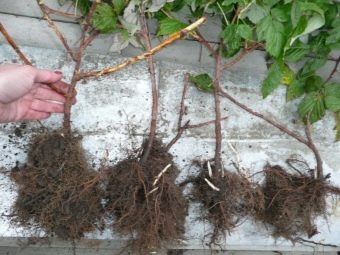Raspberry Himbo Top: description and landing
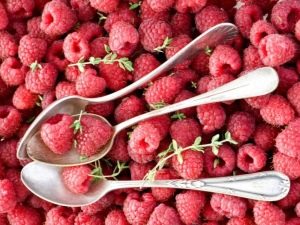
Every year, the raspberry variety Himbo Top is gaining more and more popularity. The demand for berry crops is associated with a high yield of this species (picking berries twice a year) and excellent taste.
Variety description
The Himbo Top variety is a variety of Rafzaqu raspberry remanufacturing, developed by Swiss agronomists of Promo Fruit AG. This crop can be used in amateur gardening or grown on industrial agricultural land. It grows in a greenhouse or open field.
Double harvest can gather residents of the Central regions of Russia. First, raspberry fruits in the first half of August. On annual shoots, you can harvest a bountiful harvest. The second time, the raspberry ripens in June, on the shoots that have been wintered. Under favorable weather conditions, the yield remains stable for 1.5-2 months.
Advantages and disadvantages
Gardeners choose raspberry Himbo Top due to its following characteristics:
- undemanding to the composition of the soil;
- can be planted in contaminated land;
- resistant to diseases of the root system, bacterial and fungal infections;
- gives large fruits;
- has a high yield capacity;
- fruits several times a year;
- variety licensed in Europe (Poland, England, Holland).
Among the most significant drawbacks of raspberries of this variety are frost intolerance and loss of taste in hot and rainy summer (the berry becomes sour, sluggish to the touch).
Yield indicators
Raspberry berries Himbo Top have a bright red color, which does not change, even if the berries begin to ripen. Raspberries are easy to separate from the stem, the size of the berries does not shrink from harvest to harvest. The weight of each fruit can reach up to 5-10 grams. With one bush, on average, you can collect up to 3 kg of berries. Due to its dense structure, raspberries can be conserved or frozen.
The Himbo Top variety has a high ability to spawn. In the first year after planting, it can plant up to 7 shoots, in subsequent years - up to 12. The height of the raspberry can reach 2 meters and 20 centimeters, and the length of fruit branches - 80 cm.
Given the tall variety, the distance between the plants should be at least 3 meters, and the shrub itself must be tied to the trellis (for ease of harvesting).
Choice of place
For the cultivation of raspberries is better to choose loamy soil, rich in nutrients. If the soil is acidic, limestones or dolomite are added to the seedlings before planting.
Raspberries are not recommended to be planted on the slopes and in places of a large accumulation of moisture. Optimum for planting will be the area with a slight slope, not exposed to strong wind.
Malinnik should be well lit by the sun, allowed the presence of a small penumbra. Otherwise, the yield will be reduced, and the berries will get a sour taste. Before planting raspberry saplings on the plot, it is recommended to sow it with lupine, rye or mustard, which are sideratami. You can not plant raspberries in the place where they grew tomatoes, peppers and potatoes, since the diseases of these vegetable crops can spread to the raspberries.
Often, raspberry bushes are planted along the fence, but this option will create a shadow for the plants, will not allow them to bear fruit in full force and how to take care of them. It is better to plant seedlings from north to south or from the north-east to south-west.
Landing
Raspberries are planted in planting furrows 60 cm wide, 45 cm deep. They must be dug 3 weeks before the intended planting. To strengthen the walls of the pits using plastic wrap. It is necessary to observe the distance between seedlings of 2.5-3 meters, so that overgrown shoots do not create a shadow. Raspberry is a light-loving plant that needs a lot of UV.
Priming
The composition of the soil for raspberry Himbo Top is not of paramount importance. Fertilizing planting can be manure, complex mineral additives or superphosphate. To prevent chemicals from entering the berry, it is better to use compost or humus.
Before planting raspberries fossa is filled as follows:
- 1st layer 10 cm high - a large amount of fertilizer;
- 2nd layer with a height of 10 cm - without additives;
- 3rd layer 30 cm high - a small amount of fertilizer.
Seedlings should be well buried, leaving the root neck above the ground, plenty of water. It should be noted that regular watering is very important for the culture of this variety, since not only the quality of flowering and yield, but also the sweetness of the berry depends on it.
If the soil is not sufficiently wetted around the shrub, various diseases can develop (root rot), and the collected fruits will be poorly stored.
Care
Raspberry requires standard procedures for the care of plants. However, if you want a shrub to bear fruit twice a year, It is necessary to follow some recommendations related to the care of this particular culture.
- Cut branches for the winter.
- Stimulate plant growth in the spring.
- Feed regularly during flowering and formation of ovaries.
- Mulch the soil with sunflower husks, pine needles, sawdust or straw.
- Loosen the soil around the bush.
- The shrub can not pinch, as a consequence of this may be a slow development of the plant, the rapid growth of lateral shoots.
- Lanes for plant garters should be T-shaped or V-shaped. It is permissible to use the spiral method of attachment (wire is twisted around the seedling). The garter needs to be carried out under an inclination, otherwise it is possible to damage the upper part of the seedling where the fruits are formed.
- Regularly inspect raspberry bushes for damages and diseases. Damaged shoots are removed, diseased plants are sprayed with specialized drugs in doses recommended by the instruction (drugs "Topaz", "Oksihom", Bordeaux mixture).
- In order for plants not to be exposed to pests (aphid, caterpillars, spider mites, beetles, and others), they are treated with Karbofos and Iskra before they begin flowering. To combat a similar problem during the ripening of berries, it is better to resort to folk remedies: garlic, onions peel extracts, tobacco dust.
In anticipation of the winter season, annual shoots are thinned, firmly pressed to the ground cover with the help of large branches or planks. The raspberry bushes that were planted several years ago are cut off.
How to choose seedlings?
When buying raspberry bushes it is necessary, first of all, to carefully examine the roots of plants and buds. At the base of the seedling buds should be at least three, subsequently, from them shoots will develop. A well-developed root system will be a guarantee that the plant will get acclimatized perfectly after landing on a new place.
The appearance of the ground part of the special role does not play, seedlings can be practically without branches.
Gardeners reviews
According to reviews of amateur gardeners, workers of farms and agro-industrial enterprises, the raspberry variety Himbo Top attracts with unpretentiousness, good survival, high productivity, resistance to all sorts of diseases, beautiful appearance. The structure of the shrub makes harvesting as convenient as possible.
Berries can be served as a separate dessert, used in baking, undergo preservation and freezing (they do not lose flavor and texture). Greenhouse-grown raspberries Himbo Top can bear fruit until mid-October.
For more on raspberry varieties Himbo Top, see below.

